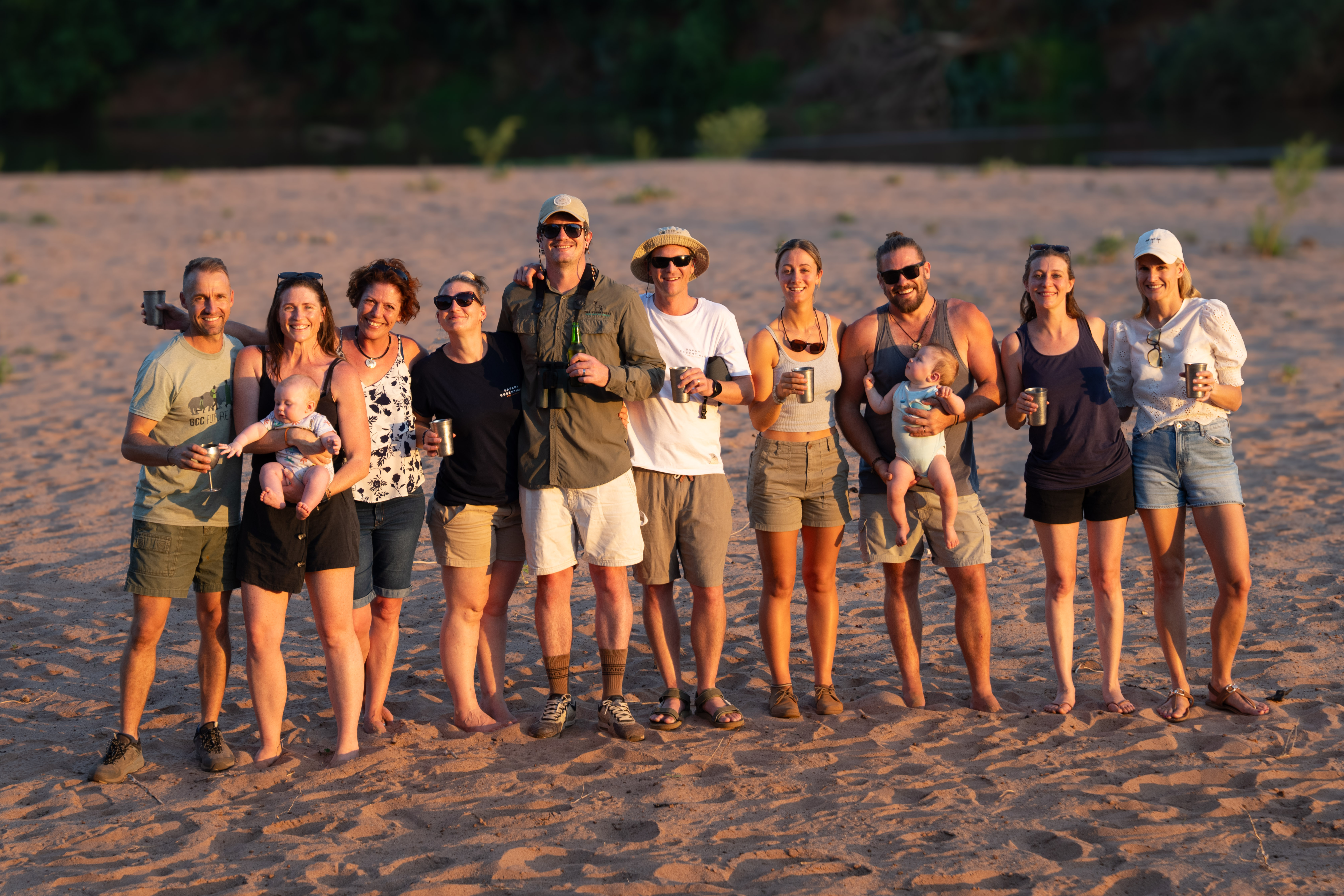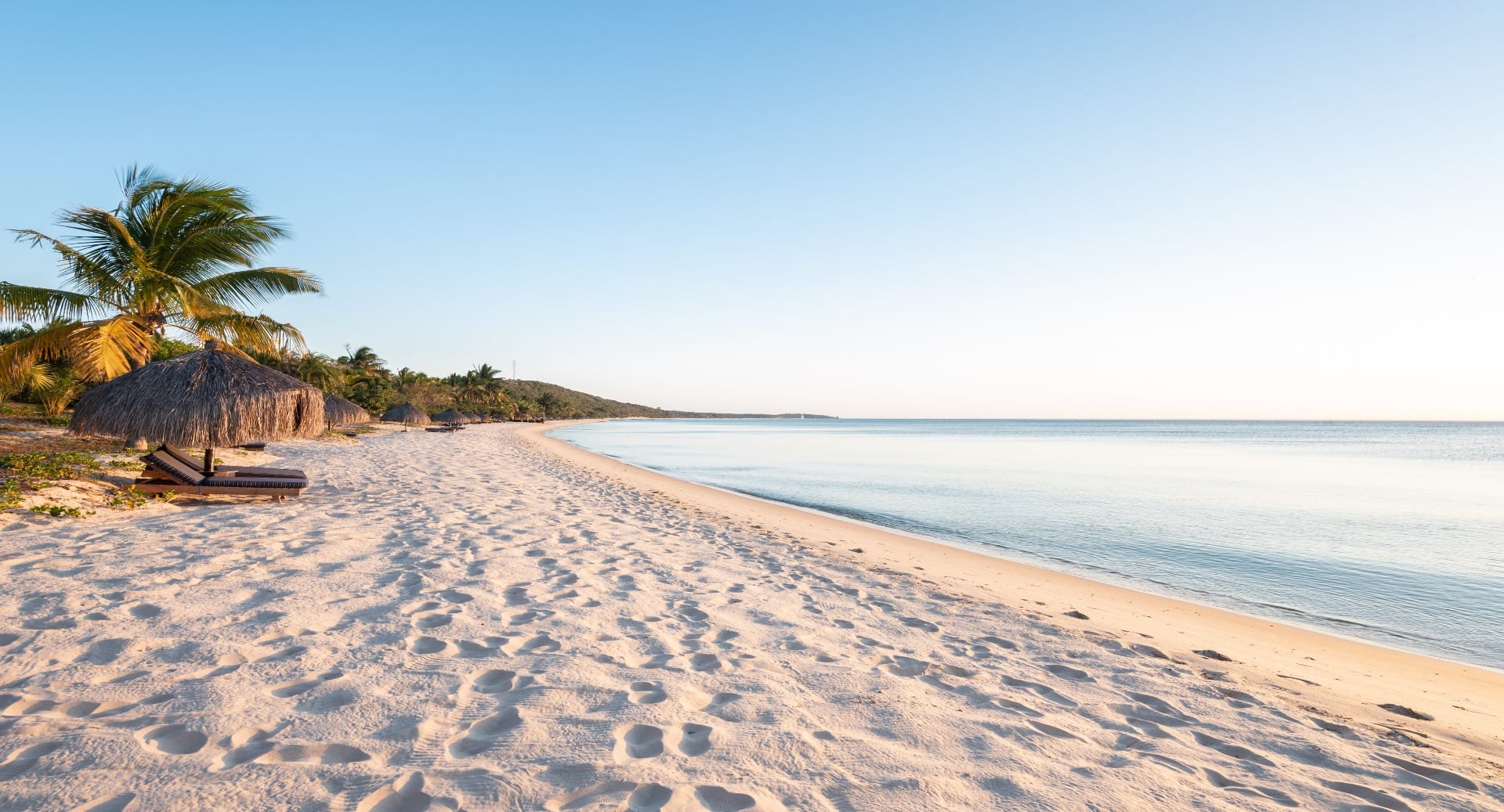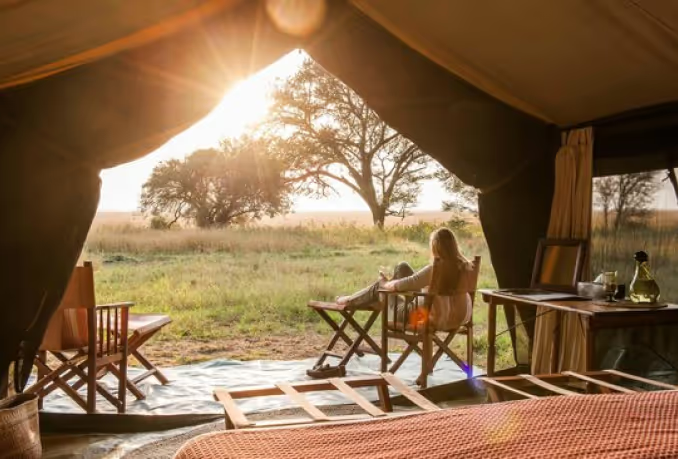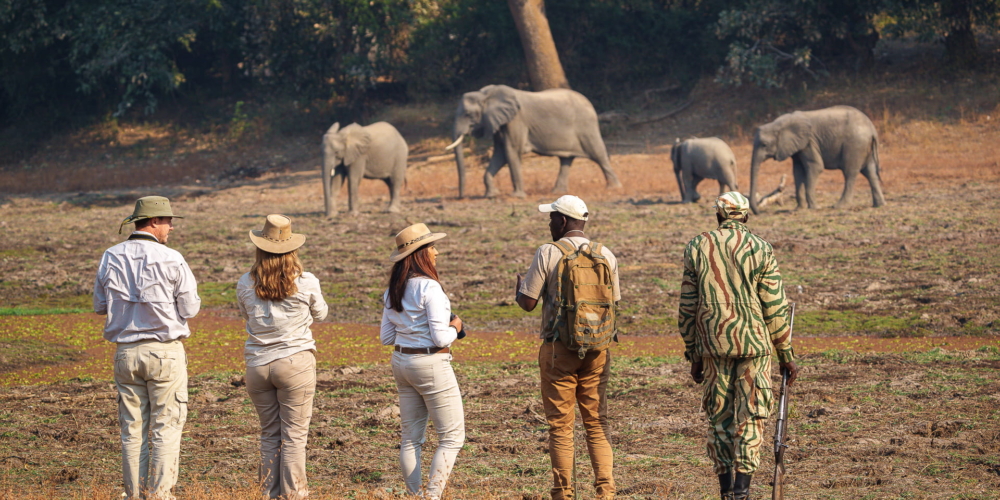
There’s something that happens when you step out of the vehicle and onto the earth. The bush quietens, your heartbeat picks up, and suddenly every sound, the crack of a twig, the whoop of a hyena far off, feels amplified.
That’s the moment you realise this isn’t a drive anymore. This is you in the wild.
Why Walking in the Bush Feels Different
A walking safari strips away the noise (and the diesel). On foot, you trade horsepower for pure presence. You start to read the bush differently… the way impalas flick their tails, how oxpeckers give away danger, the scent of wild sage crushed underfoot.
Brett often says, “You can drive past the bush your whole life, or you can walk through it once and really see it.”
It’s not about chasing sightings. It’s about connecting with small things – the tracks, the sounds, the smells, and that instinctive part of yourself that still remembers what it means to be in the wild.
What Exactly Is a Walking Safari?
A walking safari is a guided wilderness experience led by highly trained field guides and trackers that focuses on tracking, observation, and immersion, not distance or speed. Think three to four hours of slow movement, stopping often, learning as you go.
Your guides carry rifles and are FGASA-qualified, with advanced training in dangerous game and first aid. Safety always comes first, but you’ll be surprised how natural it feels once you settle into the rhythm of walking.
You’ll learn to interpret tracks, recognise alarm calls, and read the subtle clues that reveal who’s been there before you - from elephants to dung beetles.
Where to Go on a Walking Safari in Africa
Greater Kruger, South Africa
Few places compare to South Africa’s Greater Kruger National Park for diversity, access, and depth of guiding expertise. This is BHS territory — where Brett and his team lead immersive, on-foot safaris that bring you face-to-face with the raw pulse of the bush.
Walk across open savanna, along ancient riverbeds, or through mopane woodlands alive with birdlife. Partnering with Lowveld Trails Co., BHS also offers Primitive Trails — multi-day wilderness walks where you sleep under the stars with only your pack, your guide, and the wild for company.
Zambia – The Birthplace of the Walking Safari
Zambia is where walking safaris truly began. In South Luangwa, Kafue, and Lower Zambezi National Parks, guides have perfected the art of tracking, storytelling, and reading the land. Think dry riverbeds, lush floodplains, and wildlife encounters so intimate they’ll stay with you forever.
Botswana – Delta to Desert
From the Okavango Delta’s lush floodplains to the Makgadikgadi Pans and the wild Kalahari, Botswana offers some of Africa’s most pristine walking environments. Join a walking expedition in the Delta ,like our Birding in the Delta, On Foot adventure - where silence and stillness reveal nature’s rhythm in one of the world’s great wetlands.
The Kalahari – Desert Rhythms
The Kalahari’s vast red dunes and endless horizons redefine “open space.” Walking here is a sensory experience... discovering ancient San rock art, learning desert survival skills, and seeing how life adapts in a landscape that looks empty but is full of stories.
Gabon – Africa’s Hidden Eden
For something completely different, Gabon’s Loango and Ivindo National Parks offer the chance to track forest elephants, gorillas, and sitatungas on foot in the Congo Basin rainforest. It’s wild, remote, and utterly untamed; the next frontier for walking safaris.
Zimbabwe & Beyond
In Zimbabwe’s Mana Pools and Hwange National Parks, walking safaris bring you close to elephants, painted dogs, and the Zambezi’s wild heart. You can even combine on-foot adventures with canoeing safaris - the ultimate mix of water, wilderness, and wonder.
Why the Greater Kruger Is Made for Walking
Few places on the planet offer what the Greater Kruger does: vast unfenced wilderness, thriving biodiversity, and a network of private reserves where walking safaris are an everyday part of life.
Here, you can walk across open bushveld, through mopane woodlands, and along dry riverbeds that tell stories in their sand. It’s wild but accessible and with BHS, you’re in the hands of people who’ve been walking this landscape for decades.
Brett’s team has deep roots in the Lowveld, working closely with local conservation experts and guides from Lowveld Trails Co. pioneers of Primitive Trails that take you deep into the wild with nothing but your pack, your guide, and the open African sky.
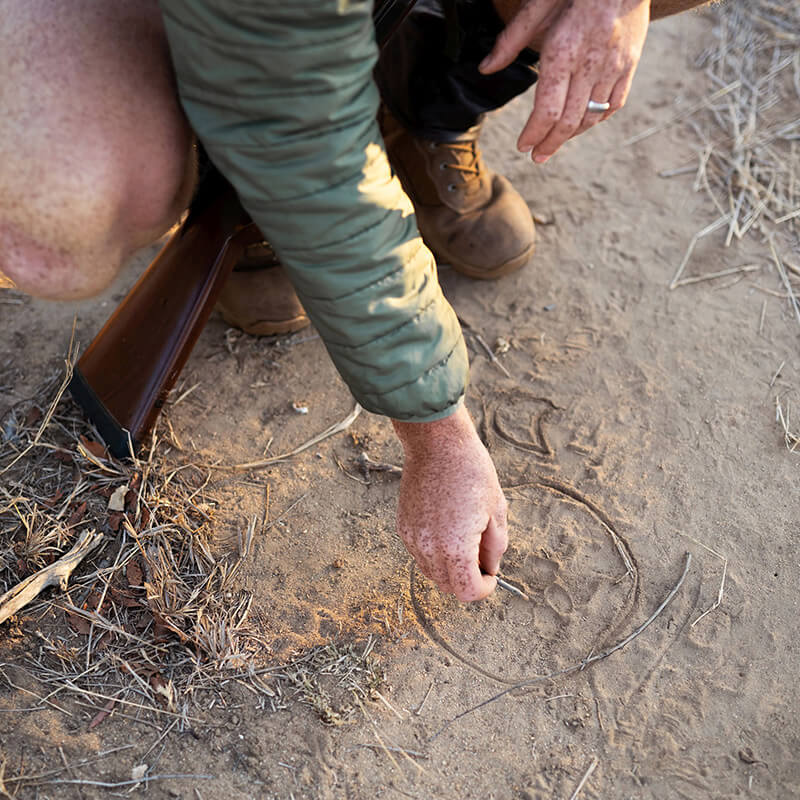

The Different Types of Walking Safaris in the Greater Kruger
Not every walking safari looks (or feels) the same. Depending on your sense of adventure — and your preferred level of comfort — there’s a walk for everyone. From easy lodge-based bush walks to multi-day wilderness trails, each experience offers a new way to connect with the African wild.
Here’s how to choose the right one for you:
Primitive Trail vs. Lodge Bush Walk vs. Multi-Day Walking Safari
1. Lodge Bush Walks – The Gateway Walk
This is your introduction to walking safaris, the short, guided excursions offered from many lodges across the Greater Kruger. You’ll head out after breakfast with your armed guide and tracker, usually for 1–2 hours around camp.
It’s not about covering distance; it’s about slowing down and paying attention. You’ll read tracks, learn about medicinal plants, smell wild sage, and maybe bump into a giraffe or zebra on foot.
You’re back in time for coffee, comfort, and that spa booking...perfect for guests who want a taste of walking without trading in their creature comforts.
2. Primitive Trails – The Real Deal
Now we’re talking deep wilderness.
A Primitive Trail (like those run with Lowveld Trails Co.) is a multi-day, self-supported wilderness immersion - you carry what you need, sleep under the stars, no fences, no Wi-Fi, no hot showers.
You walk from sunrise to late morning, rest through the heat of the day, and explore again in the cool of the afternoon.Evenings are spent around a small fire, listening to lions calling in the distance.
It’s raw, real, and completely off grid…more of a pilgrimage. This is where you truly meet the bush on its own terms.
3. Multi-Day Walking Safaris with Lodge Stays – The Soft(er) Adventure
For those who love the idea of walking by day but prefer a bed and a cold drink at night - this is your balance.
You move between comfortable bush camps or lodges each night, walking 10–15 km a day with a light daypack while your luggage moves ahead.
Think Simbavati Trails Camp and Rhino Plains Camp in the Greater Kruger, or Robin Pope’s Mobile Walking Safaris in Zambia.You still get that sense of wildness and rhythm of walking, but end the day with a proper shower, good food, and a glass of something cold. Adventure, without sacrificing comfort.
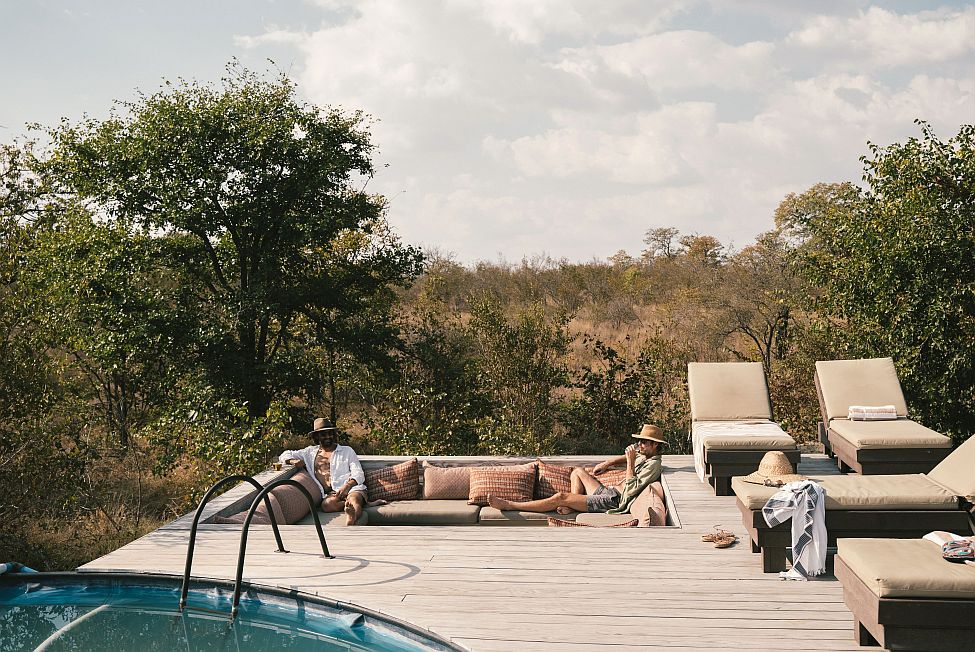

Best Time to Go Walking in the Kruger
The dry season (May to September) is prime walking safari season. Grass is shorter, visibility is excellent, and temperatures are ideal for long mornings on foot.
In early summer, after the rains, the bush transforms, greener, alive with birdlife and wildflowers though walks are generally shorter due to the heat.
Whatever the month, walks are always guided with safety in mind… adjusting for weather, wildlife movement, and guest comfort.
Walking Safari Etiquette
Walking safaris aren’t just about where your feet take you : they’re about how you move, listen, and fit into the rhythm of the wild. On foot, you’re no longer an observer; you’re part of the landscape.
Here’s how to walk well in the bush:
1. Follow your guide- always.
Your guide is your lifeline out here. They read the bush second-by-second - the wind direction, bird calls, and animal behaviour - to keep you safe. When they stop, you stop. When they whisper, you listen.
2. Walk in single file.
It’s quieter, safer, and keeps your scent profile narrow so wildlife doesn’t spook. The person behind the guide keeps a steady pace, and everyone else follows in rhythm.
3. Keep quiet... really quiet.
No chatting, no zips, no snack-wrapper symphonies. Whispering isn’t necessary; silence is the soundtrack. The less noise you make, the more you’ll see (and feel).
4. Respect personal space - yours and theirs.
Wildlife reacts to energy and movement. Keep still, stay calm, and trust your guide’s cues. If an animal looks your way, it’s reading the situation. Let it decide what happens next.
5. Don’t rush the moment.
Walking safaris are about not chasing sightings. The thrill is in the details , a fresh lion track, the texture of elephant bark, the way dust hangs in a sunbeam.
6. Leave nothing but footprints.
No collecting feathers, bones, or flowers - everything has its place in the ecosystem. Carry out what you carry in.
7. Dress for blending in.
Neutral tones (khaki, green, brown) help you melt into the landscape. Comfortable boots, a wide-brimmed hat, and light long sleeves make all the difference.
Why It Matters
Walking etiquette isn’t about rules - it’s about respect.
Respect for your guides, for the wildlife, and for the privilege of being on foot in wild country. The more you tune in, the more the bush reveals itself and that’s when the magic happens.
What to Pack for a Walking Safari
- Comfortable, closed walking shoes or lightweight boots
- Neutral clothing (think khaki, olive, tan - not your gym neon)
- Hat, sunscreen & insect repellent
- Small backpack with water
- Binoculars & camera
- Curiosity and humility – because you're entering their world
For longer itineraries like Primitive Trails, lightweight gear and a good sense of humour go a long way.
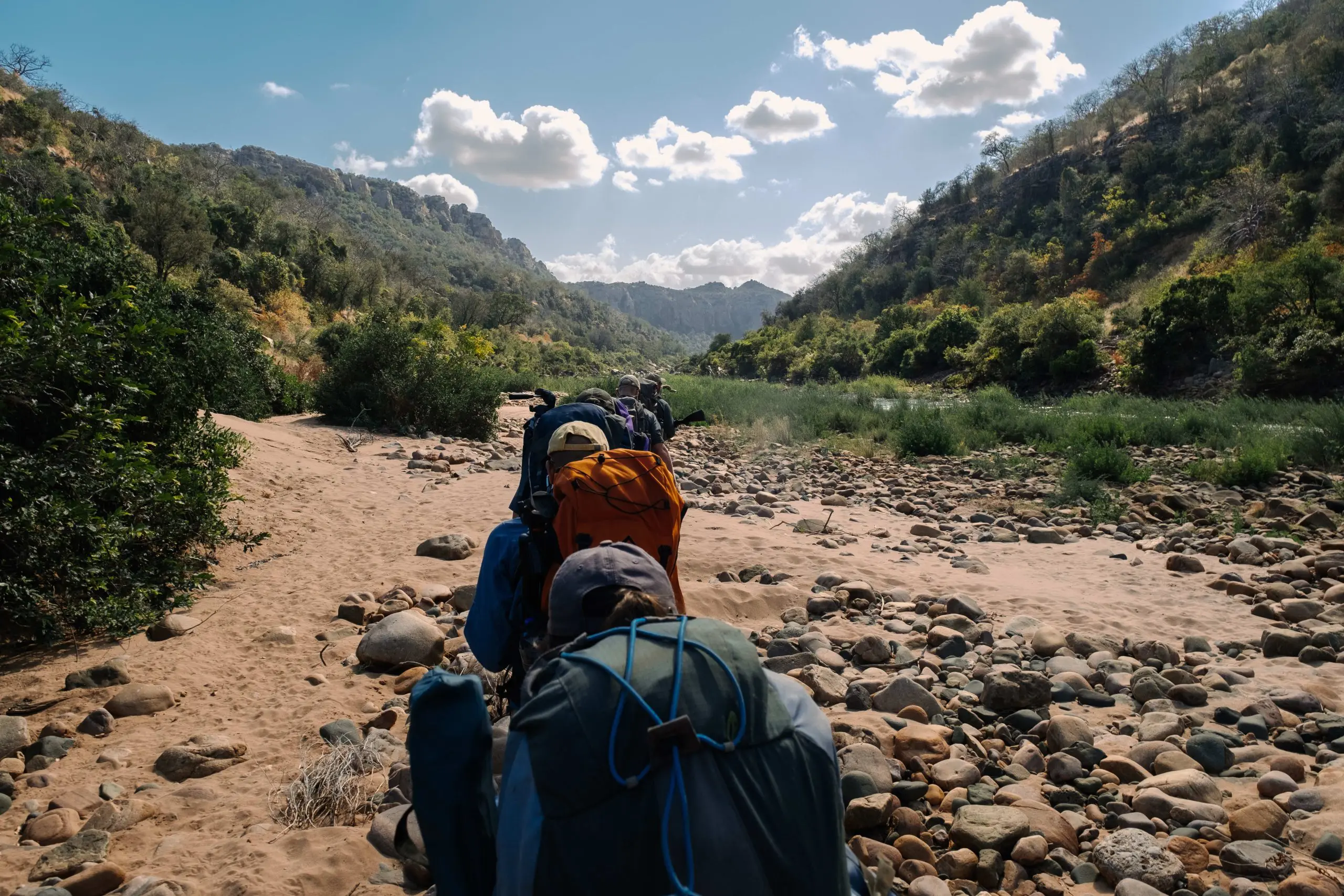
A day on Foot with BHS
A typical BHS walking safari might start before sunrise, tracking rhinos along a sandy drainage line. Mid-morning, you break for coffee beneath an acacia, comparing tracks from the night before.
Afternoons might mean a slower loop near camp, looking for birds, spoor, or the hidden drama of a dung beetle at work. At night, it’s all about the campfire and stars so bright they make you forget the rest of the world exists.
Many guests pair walking experiences with light-mobile camps like Simbavati Trails Camp or stay in classic Kruger lodges such as Jock Safari Lodge - combining comfort and adventure.
For the truly adventurous, you can even head further north for a multi-day Mobile Walking Safari with Robin Pope Safaris, or join next year’s BHS Expedition: Birding in the Delta, On Foot a 100% walking, birding-focused journey through Botswana’s Okavango Delta.
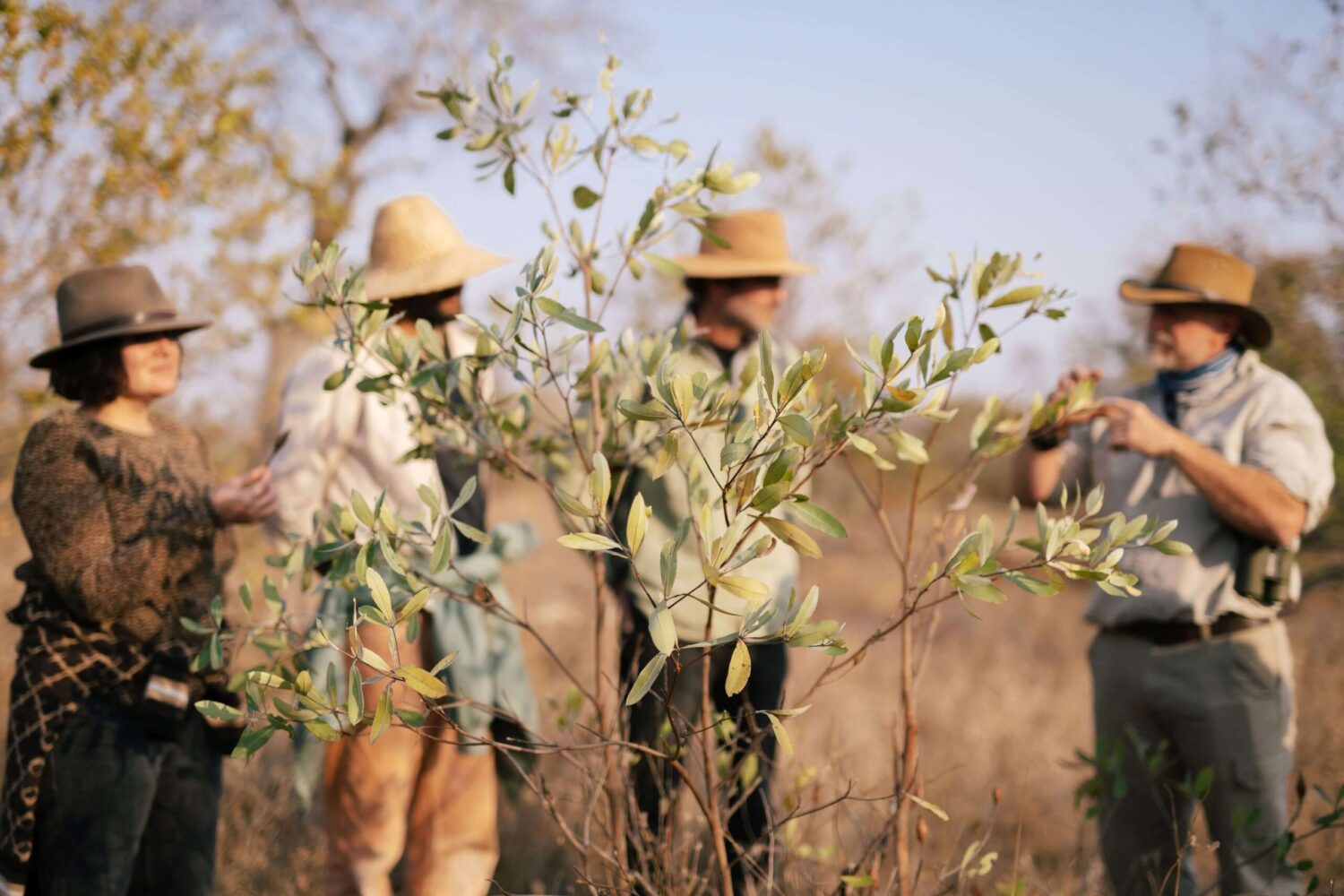
Common Questions
Is it safe?
Yes, all walks are led by highly experienced, armed guides with advanced training in walking dangerous-game areas. Safety briefings are done before every walk, and routes are chosen based on wildlife movement and guest comfort.
Will I see big animals?
Possibly! Elephants, buffalo, or even lions if luck allows – but walking safaris aren't about chasing sightings. The focus is on awareness: noticing tracks, sounds, scents, and behaviour that reveal the bush’s hidden life.
Do I need to be fit?
A moderate level of fitness is recommended. Walks are not endurance hikes, they’re immersive explorations with regular stops to observe and learn.
How far will we walk each day?
Most walks cover 4-8km, depending on terrain, weather, and wildlife activity. On multi-day trails, guests typically walk early morning and late afternoon, resting through the heat of the day.
What happens if we encounter dangerous animals?
Your guide will brief you beforehand on safety protocols. Encounters are handled calmly and professionally. Most animals move away long before you are close. The goal is always respect and distance, not confrontation.
Can children join the walk?
For safety reasons, most walking safaris have a minimum age requirement (usually 16). Though private family walks can sometimes be arranged in controlled areas – always at the guides discretion.

Ready to Experience the Bush on Foot?
Walking safaris remind us why we fell in love with the wild in the first place.
It’s the kind of experience that stays with you long after the dust washes off your boots.
Join a BHS Walking Safari, or chat to our team about custom-tailored on-foot experiences across Kruger, Botswana, Zambia, and beyond.

